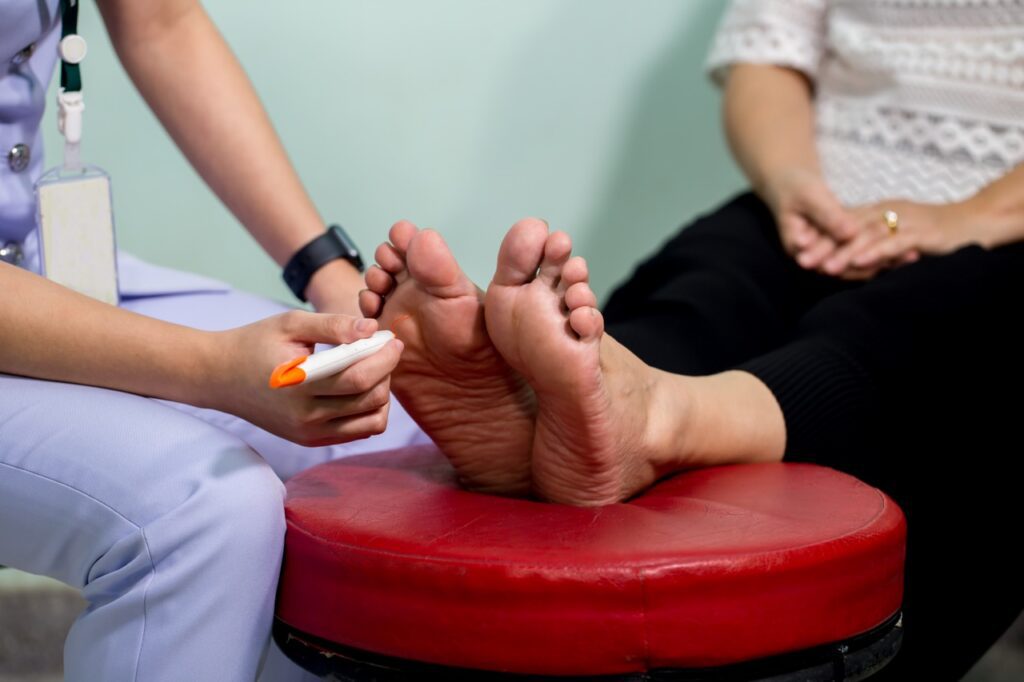Maintaining proper foot hygiene is an essential aspect of diabetic foot care. Individuals managing diabetes must be vigilant about cleaning their feet to prevent complications such as infections or wounds. Diabetic Foot Care at home Dubai involves careful attention to daily foot cleaning, monitoring, and protective measures that support overall foot health. Understanding how to safely clean and care for feet at home ensures comfort, prevents risks, and promotes long-term wellness.
Understanding the Importance of Foot Cleaning in Diabetes
Proper foot care goes beyond simple washing. In diabetes, high blood sugar levels can reduce blood flow and cause nerve damage, making the feet more susceptible to infections and slow-healing injuries. Daily cleaning routines help remove dirt, bacteria, and sweat that accumulate, reducing the likelihood of developing foot ulcers or fungal infections. Foot hygiene also improves skin elasticity and comfort, making daily activities safer.
Preparing for Foot Cleaning
Before beginning a cleaning routine, it is important to gather all necessary materials and prepare the environment. A clean basin filled with lukewarm water provides a safe foundation for washing. Lukewarm water is preferred to prevent burns, as individuals with diabetes may experience reduced sensitivity in their feet. Soft cloths, gentle soap, and a towel are essential. Ensuring the environment is safe and slip-free reduces the risk of falls or injuries during the process.
Step-by-Step Guide to Cleaning Feet
Inspect the Feet First
A critical step in diabetic foot care is careful inspection. Checking for cuts, blisters, redness, swelling, or signs of infection helps identify potential issues early. Using a mirror or asking for assistance ensures that all areas, including the soles and between the toes, are visible.
Gentle Washing
Feet should be washed daily with lukewarm water and mild soap. Avoid hot water, which can cause burns, and harsh soaps that may dry out the skin. Each foot should be gently cleaned, paying attention to spaces between toes, heels, and under the nails. Light circular motions remove debris without causing irritation.
Rinsing Thoroughly
After washing, it is important to rinse all soap residues from the feet. Soap residue can cause dryness or irritation, which increases vulnerability to cracks and infections. Gentle rinsing ensures that feet remain soft and healthy.
Drying Completely
Drying the feet thoroughly, especially between the toes, is essential. Moisture trapped in toe spaces can lead to fungal growth or infection. Soft towels or air-drying can be used, making sure the skin is completely dry before proceeding to further care steps.
Moisturizing Carefully
While keeping feet hydrated is important, diabetic foot care emphasizes avoiding excessive lotion between toes. Applying a gentle moisturizer to the tops and bottoms of the feet prevents cracking and maintains skin elasticity. Avoid applying creams in areas prone to moisture accumulation.
Additional Protective Measures
Choosing Proper Socks
Wearing clean, breathable socks protects feet from friction, moisture, and external bacteria. Cotton or moisture-wicking materials are ideal, and socks should be changed daily or whenever damp.
Safe Footwear
Supportive shoes with soft interiors and wide toe boxes prevent pressure points and injuries. Avoid walking barefoot, even indoors, to reduce the risk of cuts or punctures.
Nail Care
Trimming nails straight across and avoiding deep cuts helps prevent ingrown nails and infections. Tools should be clean, and caution should be taken to avoid aggressive trimming or cutting into the skin.
FAQs on Foot Cleaning
How Often Should Feet Be Washed?
Feet should be washed daily as part of a consistent diabetic foot care routine. Frequent washing removes dirt, sweat, and bacteria while keeping skin hydrated.
What Temperature is Safe for Foot Cleaning?
Lukewarm water is recommended. Water that is too hot or too cold can damage sensitive skin and reduce circulation in individuals with diabetes.
Can Feet Be Soaked?
Brief soaking is acceptable but should be limited to 5–10 minutes. Prolonged soaking may cause skin softening, increasing the risk of cuts and infections.
How to Handle Minor Cuts or Blisters?
Minor injuries should be cleaned gently, dried thoroughly, and monitored closely. Any signs of infection require immediate attention.
Benefits of Regular Foot Cleaning
Maintaining a consistent cleaning routine improves skin health, prevents fungal and bacterial infections, reduces odor, and enhances overall comfort. It also supports better circulation, allowing individuals to notice early warning signs of complications. Over time, consistent care can reduce the frequency of injuries and the risk of severe diabetic foot problems.
Combining Treatments for Comprehensive Foot Care
For optimal diabetic foot care, combining cleaning with other non-invasive treatments is beneficial. Gentle foot exercises improve circulation and reduce swelling, while protective bandaging on vulnerable areas prevents friction injuries. Regular inspection combined with consistent cleaning provides a comprehensive approach that safeguards foot health and promotes confidence in mobility.
Monitoring and Continuous Care
Observing daily changes in the feet helps in identifying issues early. Checking for changes in skin color, temperature, or texture and documenting observations can guide necessary adjustments in care routines. Diabetic foot care at home in Dubai thrives on consistency, attention, and preventive strategies.

Conclusion
Proper foot cleaning is a cornerstone of diabetic foot care. By following careful daily routines, incorporating gentle washing, moisturizing, protective measures, and monitoring, individuals can maintain healthy feet, prevent complications, and enhance overall comfort. Diabetic Foot Care at home in Dubai empowers individuals to take control of their foot health through safe, consistent, and effective practices, creating a foundation for long-term wellness.





Comments